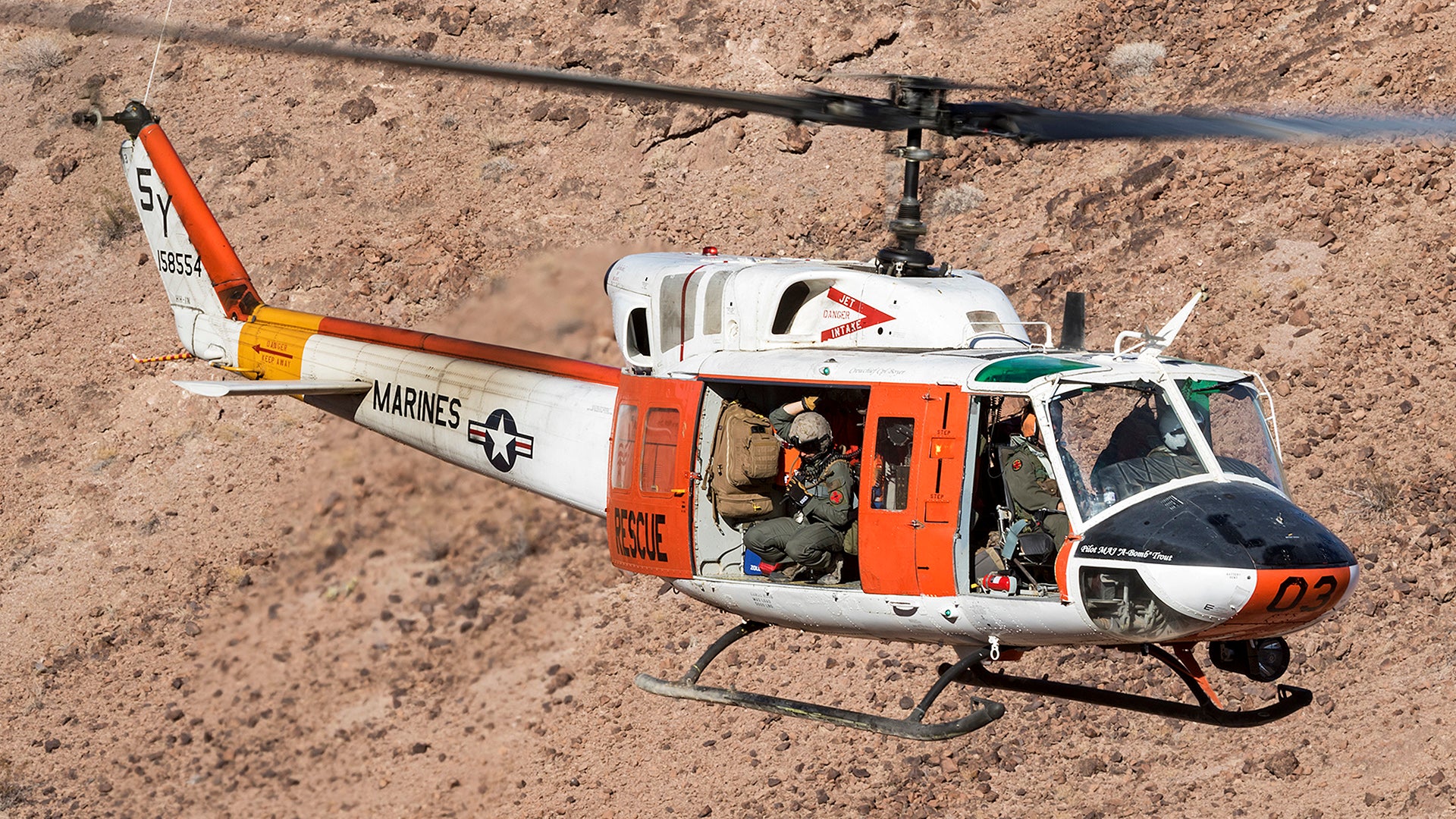For as long as I’ve been taking photos of aircraft, I’ve never really been a serial number tracking guy. Sure, after photographing aircraft from the same squadrons repeatedly over a number of years, you recognize things like a new pilot’s name painted on the canopy rail or bomb-shaped mission marks stenciled on the nose after an aircraft returns from a deployment, but I’ve never kept logs of the aircraft I’ve photographed or documented these changes. That’s just never been my thing.
Last week, while searching for images of HMX-1’s fleet of ‘White Top’ Presidential transport helicopters for a book I’m writing about Marine Corps aviation in the 21st Century (due out through Harpia Publishing in late 2020), I came across a series of images depicting the squadron’s Bell VH-1Ns supporting President Ronald Reagan’s trip to Venice, Italy for the 1987 G8 Summit. Though HMX-1 retired the VH-1Ns in the early 1990s – putting them outside the period I am covering in my book – I’ve long been a fan of the ‘November’ model Hueys. Yes, they are ancient and underpowered, but to me, they are the best-looking UH-1 variant out there. Everything just looks ‘right.’
As I was browsing through the images, something familiar caught my eye: ‘158554’
I know that number.
Back in June 2018, I visited MCAS Yuma on assignment for Air Forces Monthly magazine, as I had been assigned to write an article about Yuma’s Search and Rescue (SAR) detachment. At the time, Yuma SAR was – and remains – the last remaining operator of the ‘November’ model Hueys in the US Marine Corps, with four HH-1Ns providing search and rescue services across a 100-mile radius from Yuma. This area covers most of the Barry M. Goldwater and Chocolate Mountain bombing ranges used by military aircraft from all across the United States, as well as by allies like the UK, the Netherlands, Singapore, and others. Additionally, the Marines and sailors (all of Yuma SAR’s Search and Rescue Medical Technicians, or SMTs, are Navy Corpsmen) of Yuma SAR provide civilian search and rescue support for local, county, state, and federal law enforcement throughout that 100-mile radius from home plate.
After a morning spent interviewing pilots, crew chiefs, and SMTs about Yuma SAR and its mission, I accompanied two crew chiefs into the rugged foothills north of Yuma, going as far as we could in a four-wheel-drive pickup truck before dismounting and – in the words of one of the crew chiefs – ‘Chevrolegging’ another half mile to a rocky canyon with a vertical face about five or six stories tall.
Over the next hour, I shot hundreds of images of the Huey crew ‘rescuing’ two dummies known as ‘Rescue Randys,’ one dangling from the cliff being retrieved via a ‘short-haul’ hoist out of the canyon, and the other hoisted out of a shallow ravine and aboard the Huey after the SMT evaluated the dummy’s simulated injuries and rigging it for hoisting.
In the days that followed, I transcribed over two hours of interviews and started going through the images from that day, trying to pick out the dozen or so I would be submitting to my editor at AFM to accompany my article.
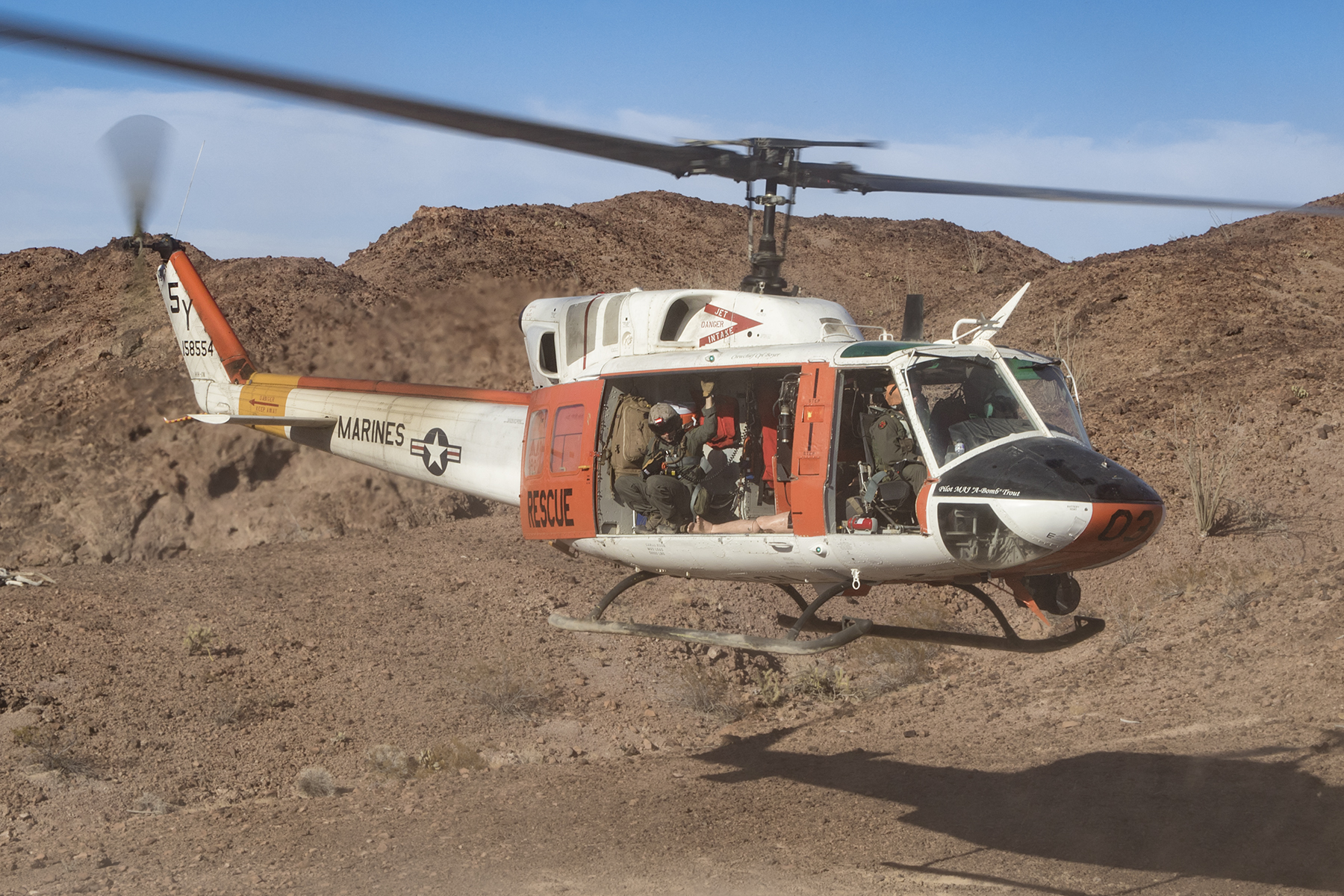
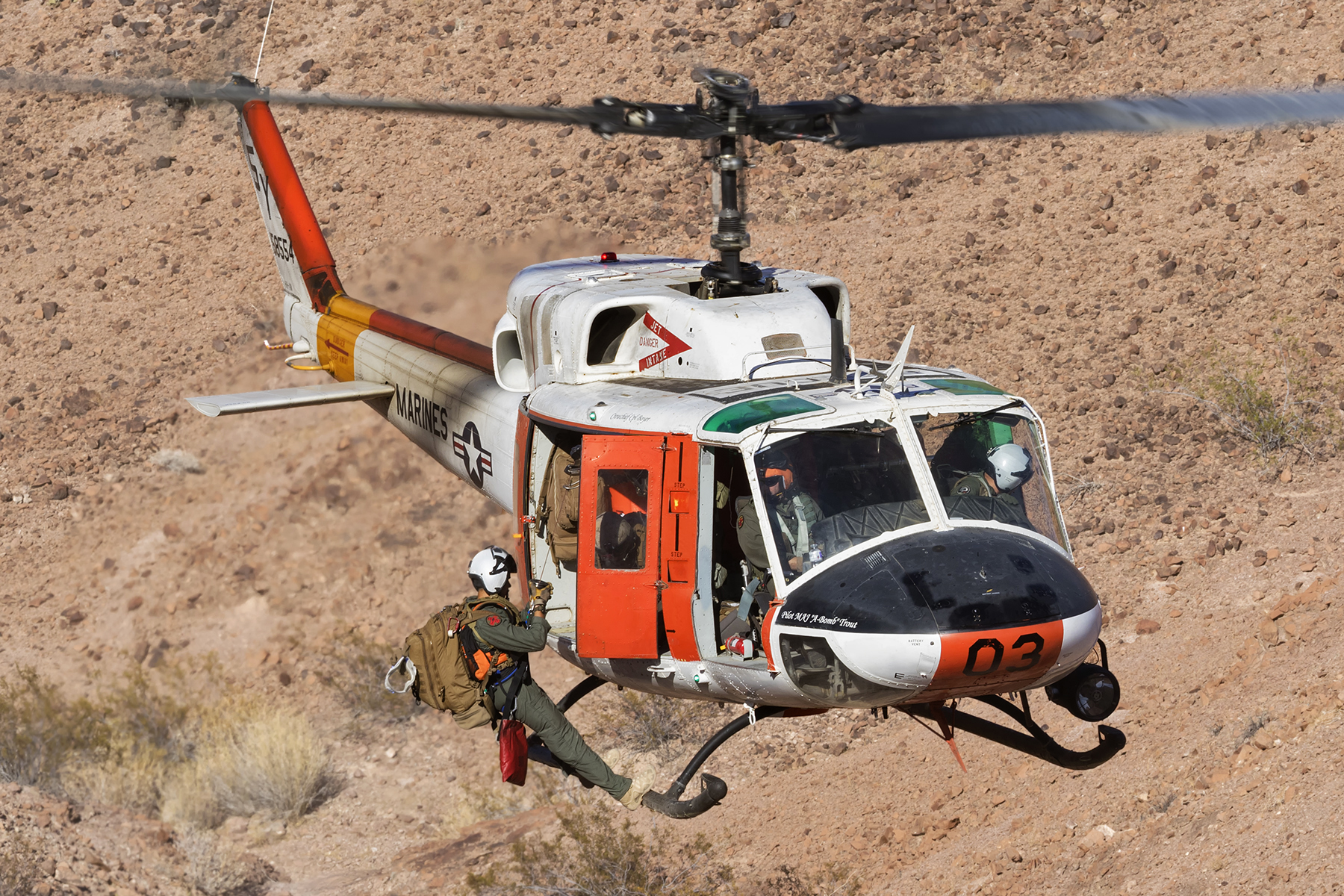
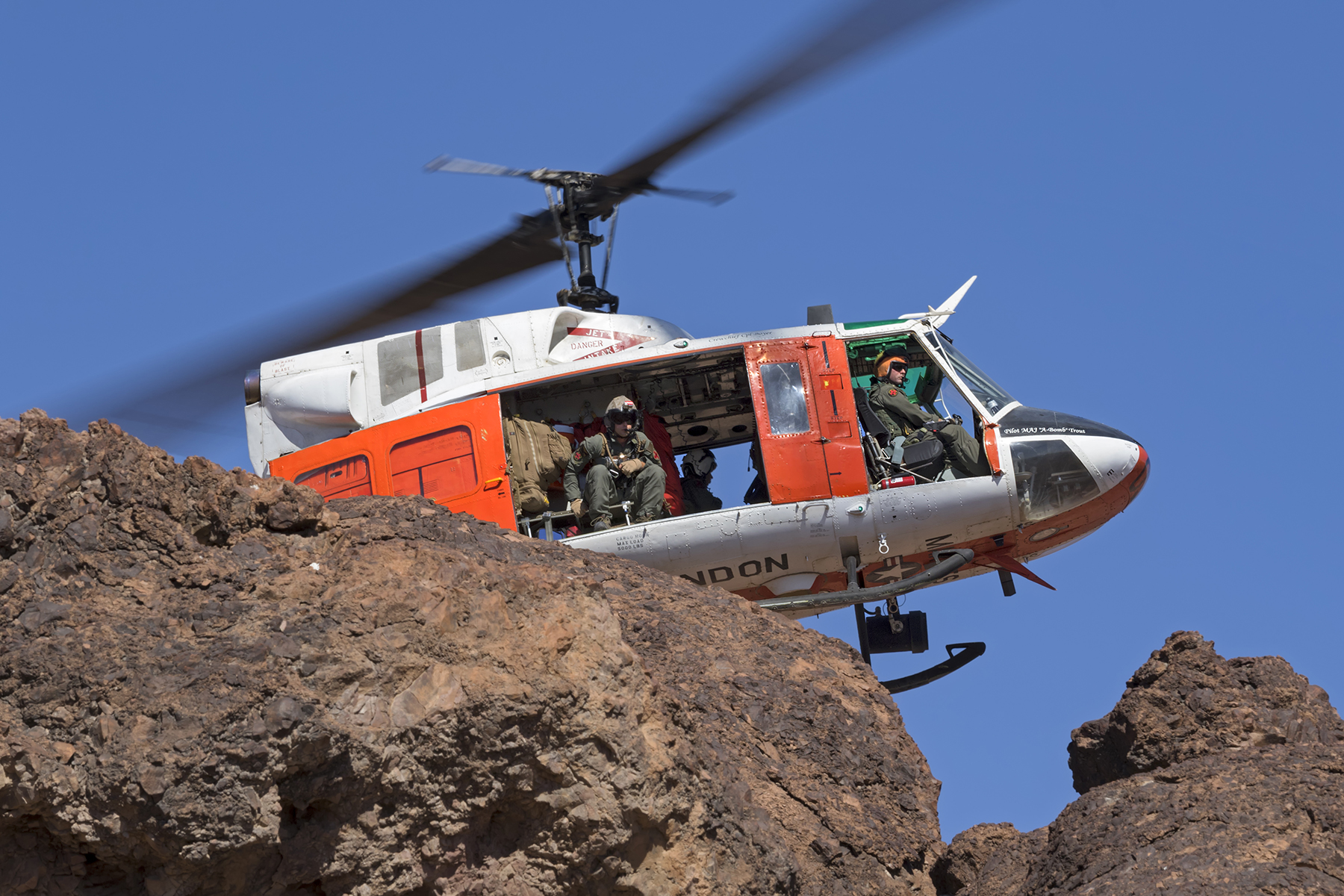
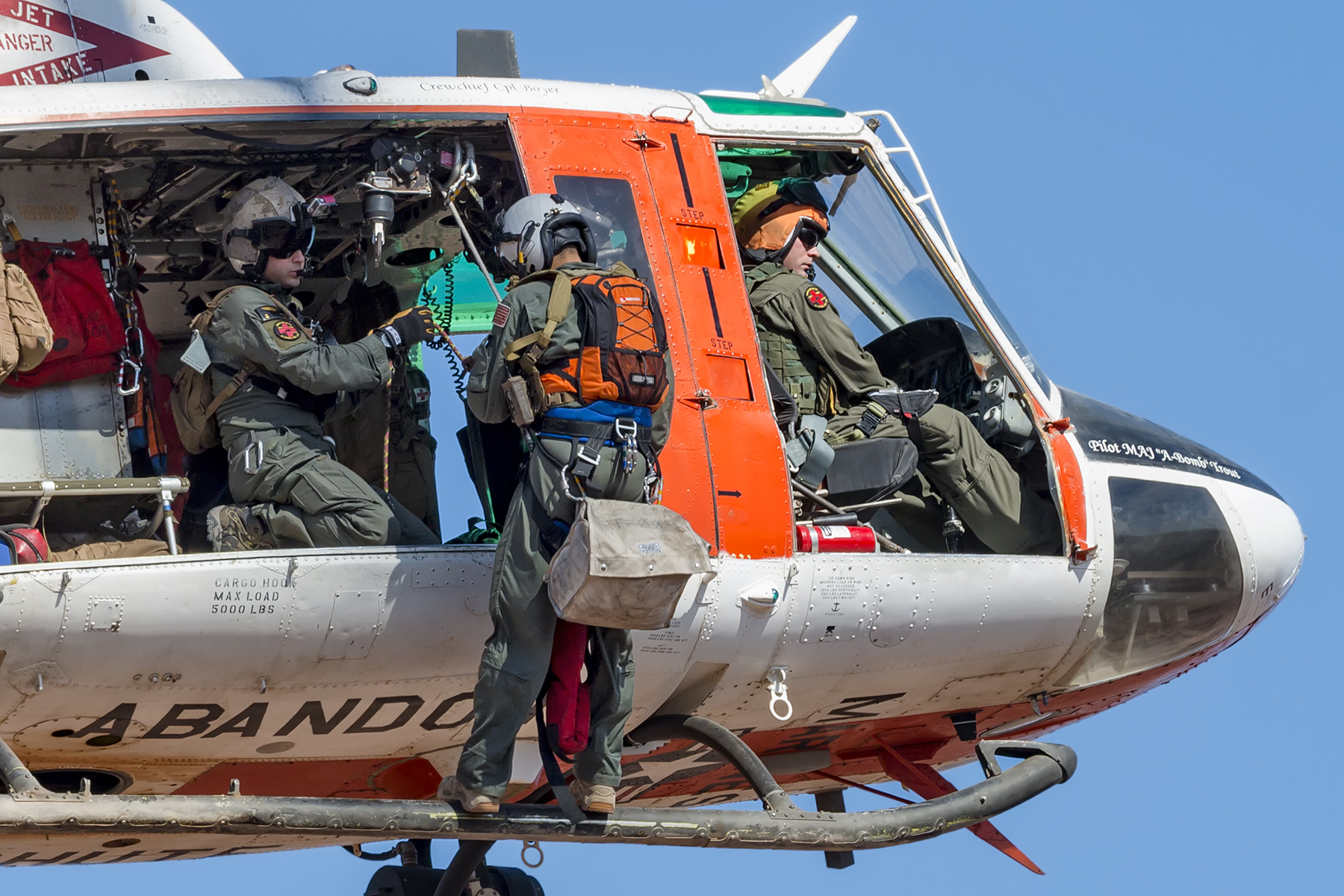
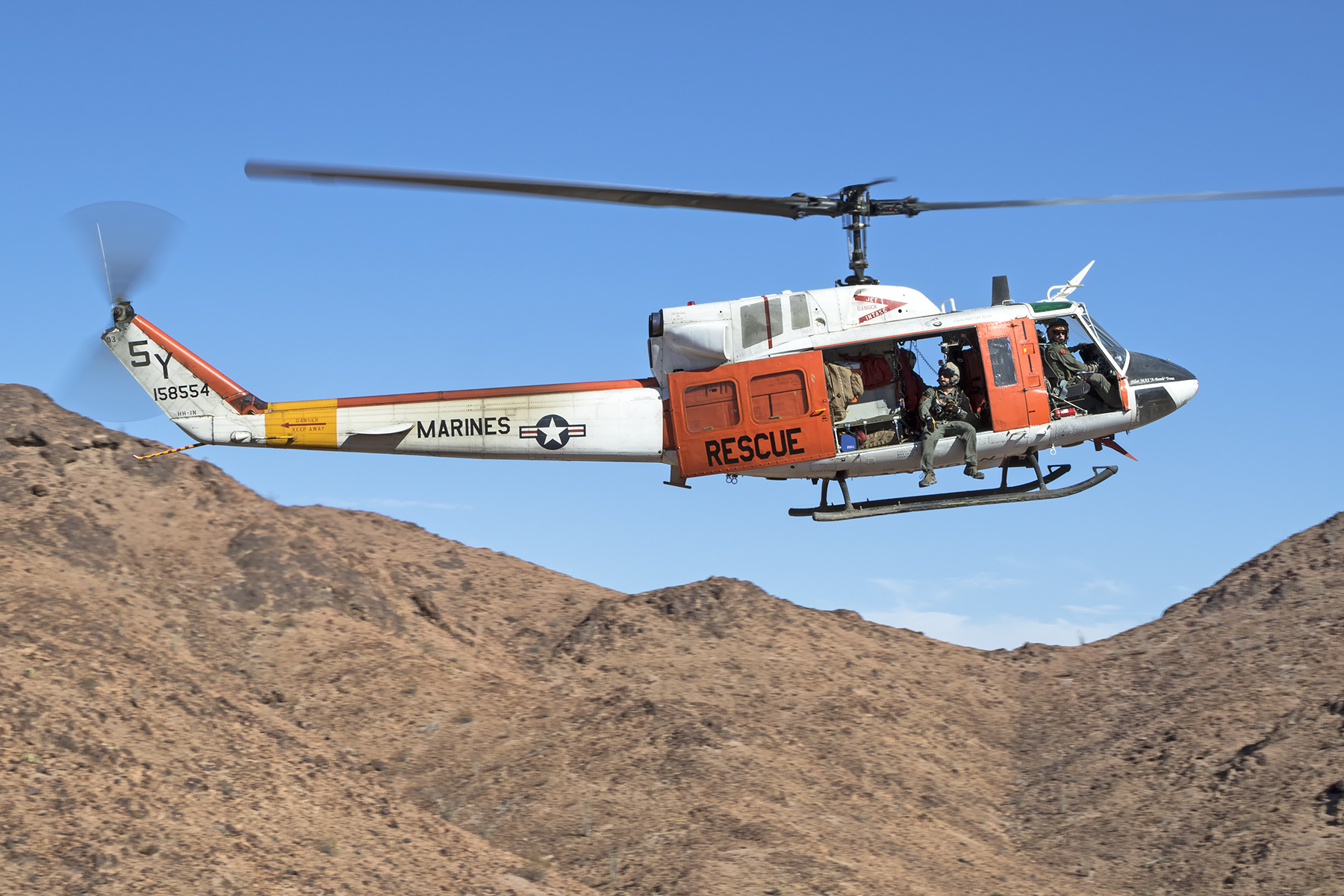
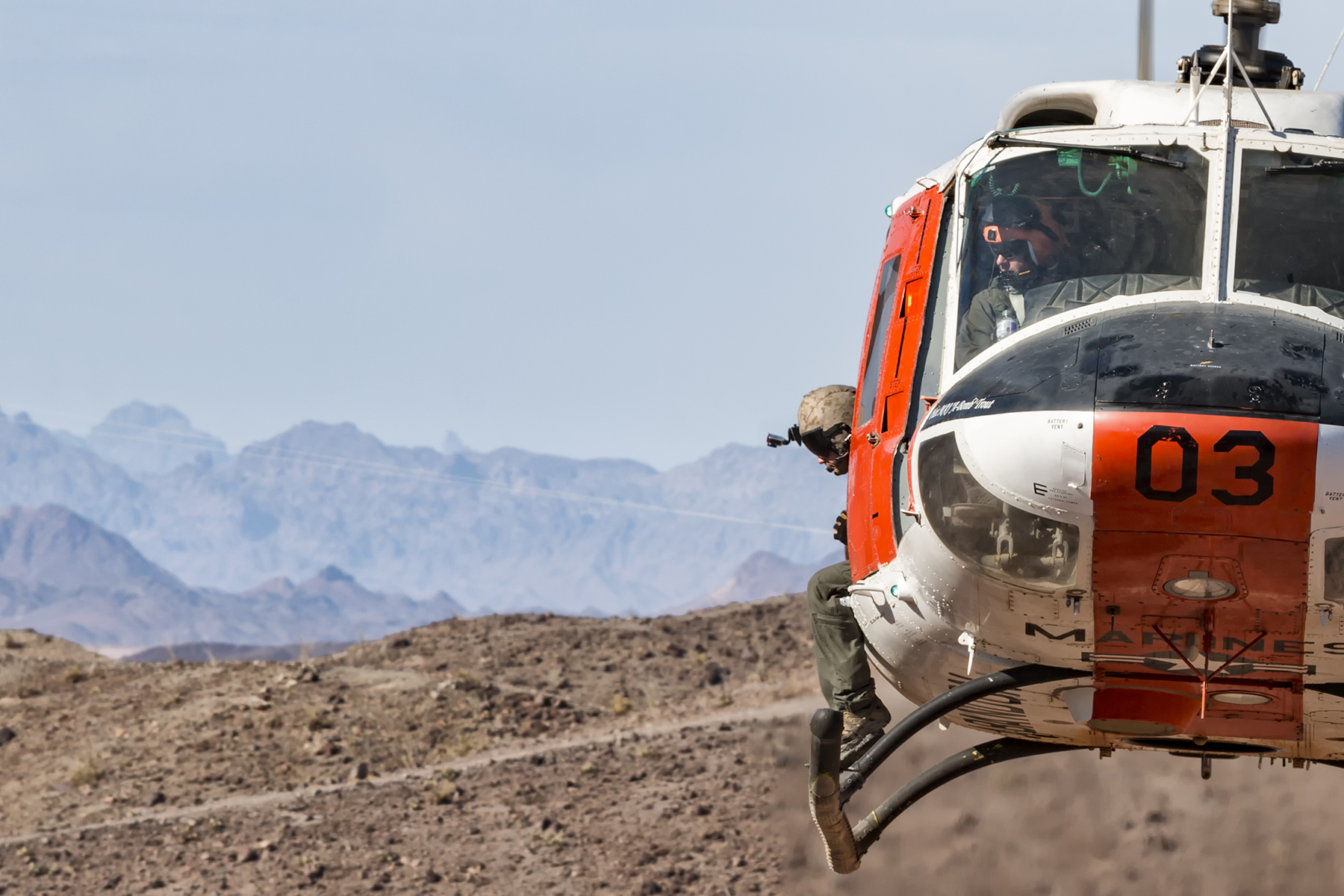
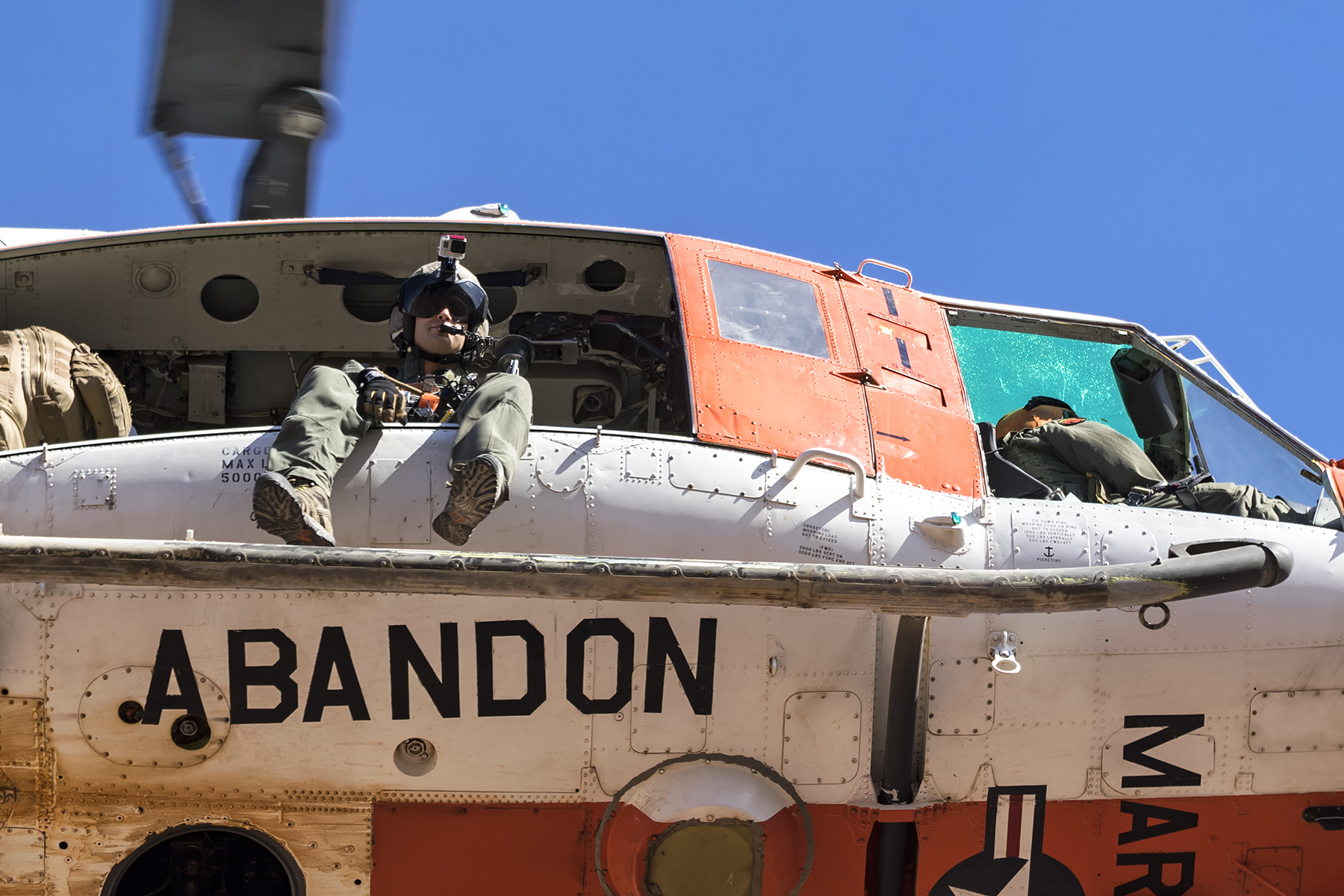
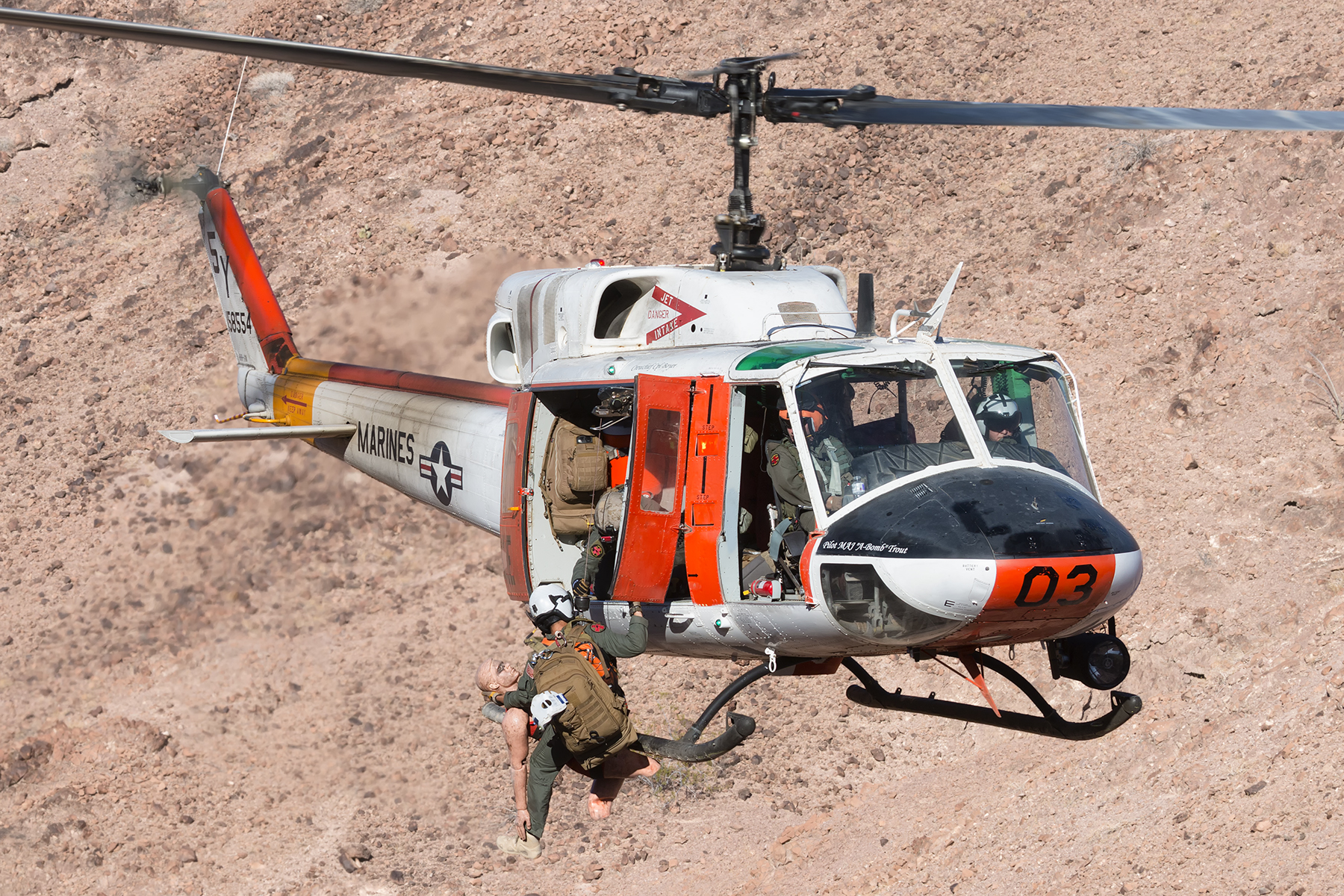
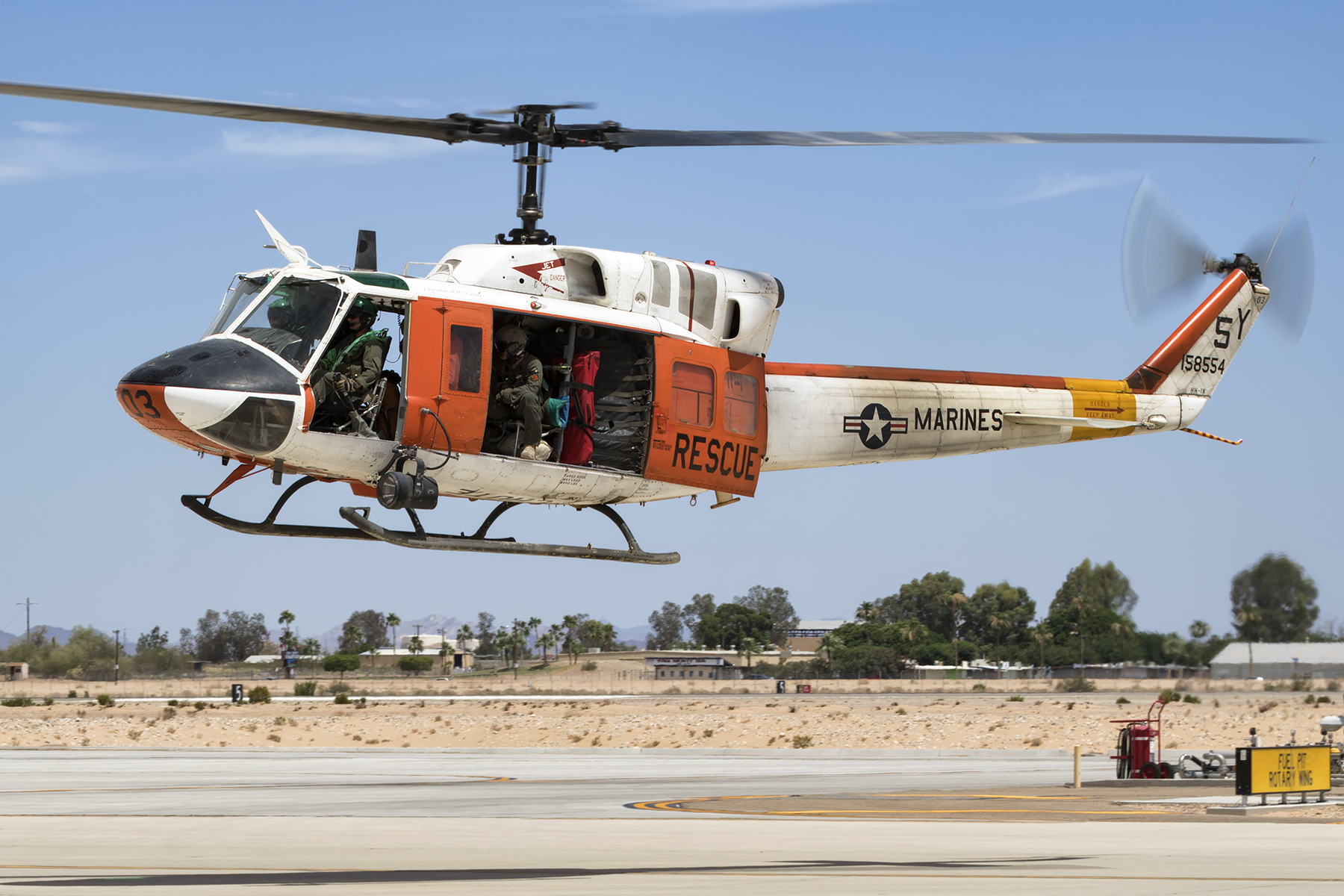
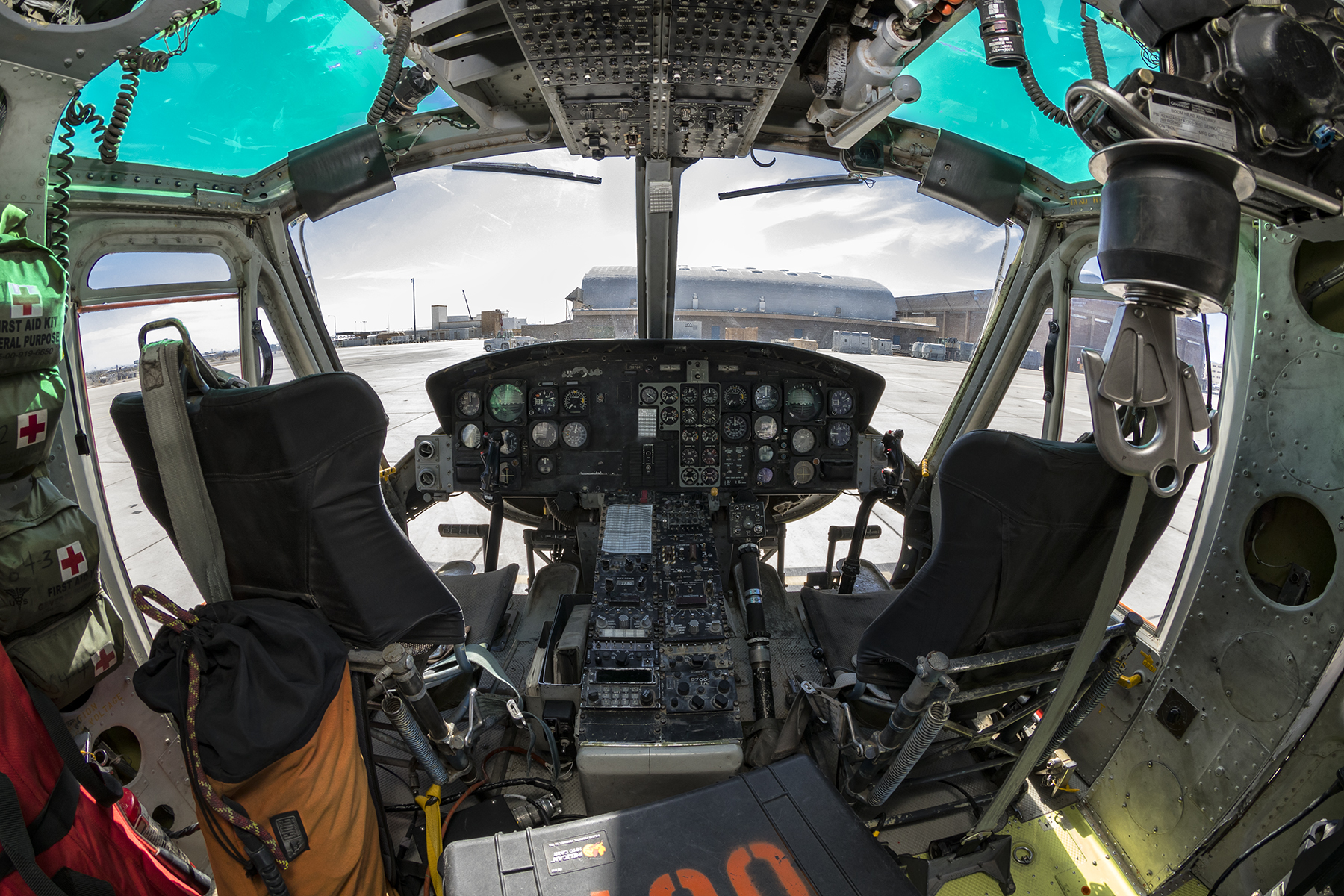
The HH-1N I shot that day was bureau number 158554. I stared at that number for hours, through image after image, sorting the ‘yups’ from the ‘nopes’ from the ‘maybes’ for publishing. As I said, I’m not a serial number guy, but when I came across that image of an HMX-1 VH-1N landing on a grass field in Italy back in 1987, I immediately knew which aircraft that was.
Marine Experimental Helicopter Squadron One (HMX-1) operated six VH-1Ns throughout the 1980s, both on the ‘green side’ doing test and evaluation work and on the ‘white side,’ complementing the squadron’s fleet of ‘white top’ VH-3D Presidential transport helicopters.
Built by Bell specifically as VIP-configured VH-1Ns, HMX-1’s Hueys featured the aerodynamic ‘shell’ from the upper fuselage of Bell’s 214ST just forward of the rotor shroud to cover and air conditioning unit and a satellite communications antenna. Passengers accessed the cabin through a four-door configuration unique to the VH-1N in place of the large, rearward-sliding door on standard UH-1s.
Seating received a massive upgrade as well, with the Huey’s bench-style seating being replaced by plush bucket seats. The cabin was completed covered in carpet, both for comfort and a degree of sound dampening from the whine of the twin Pratt & Whitney T400-CP-400 engines and the unmistakable “WHUMP-WHUMP” of the Huey’s two-bladed main rotor. A state-of-the-art for the time Sperry autopilot system rounded out the modifications that made these particular Hueys VH-1Ns.
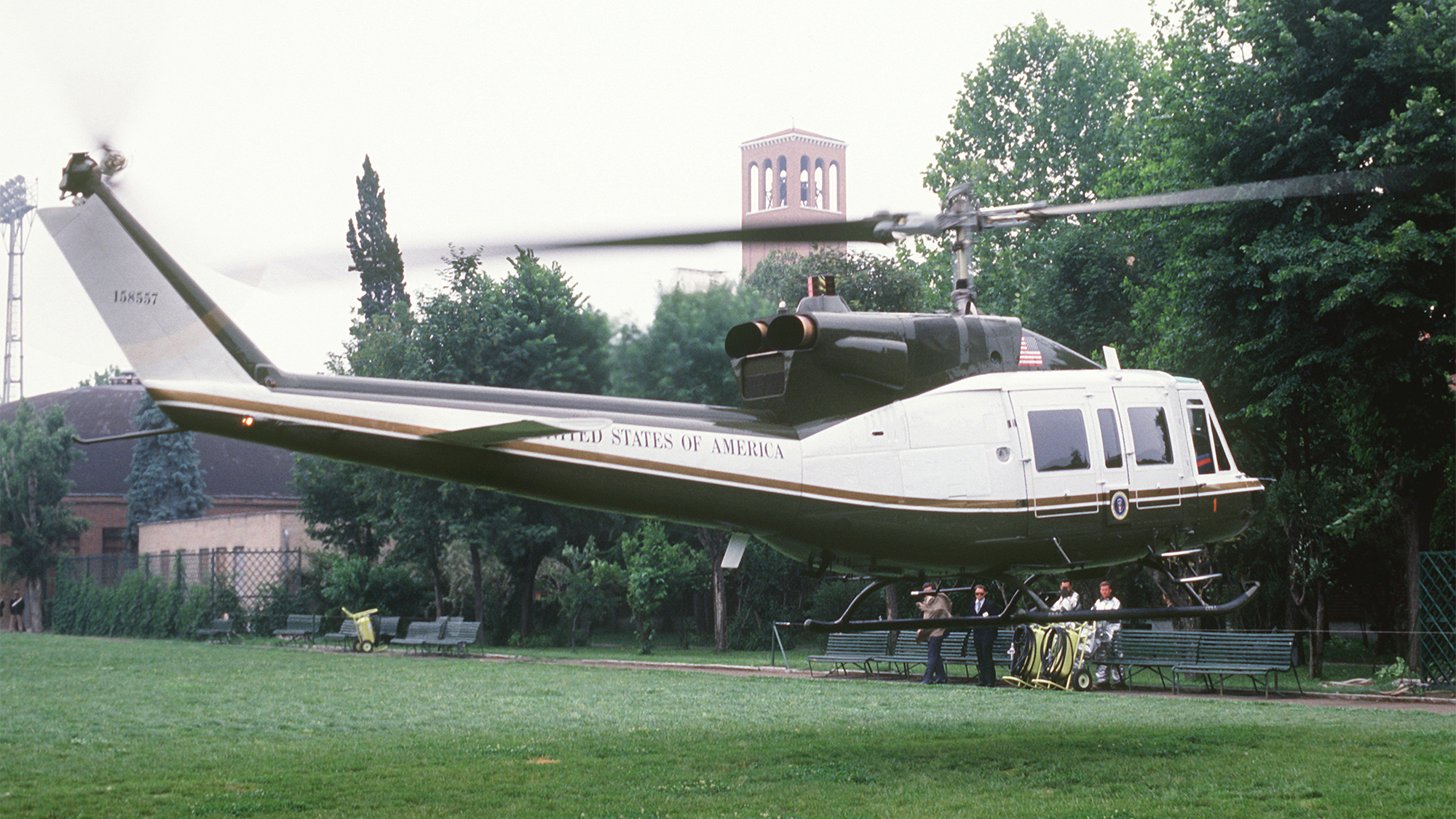
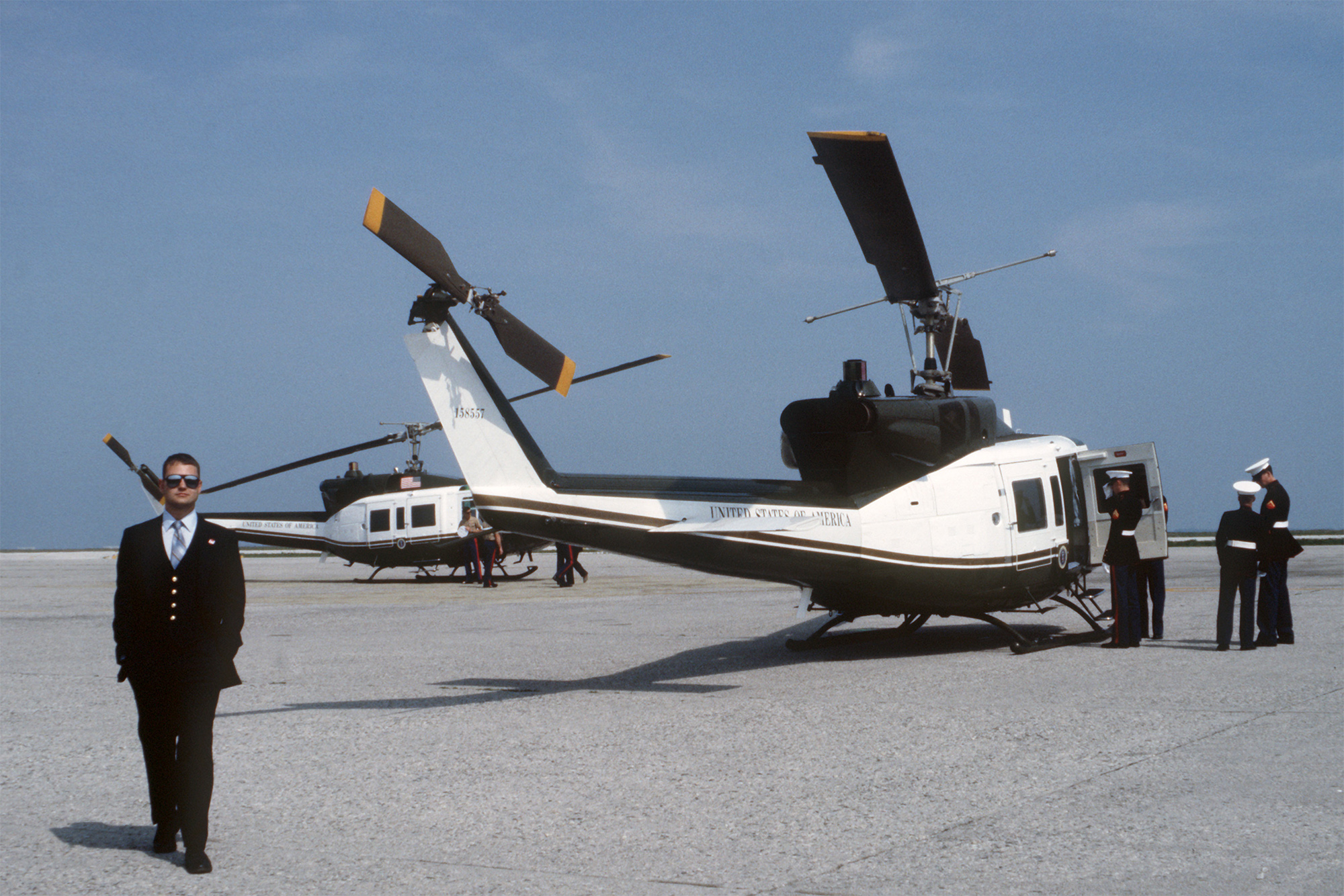
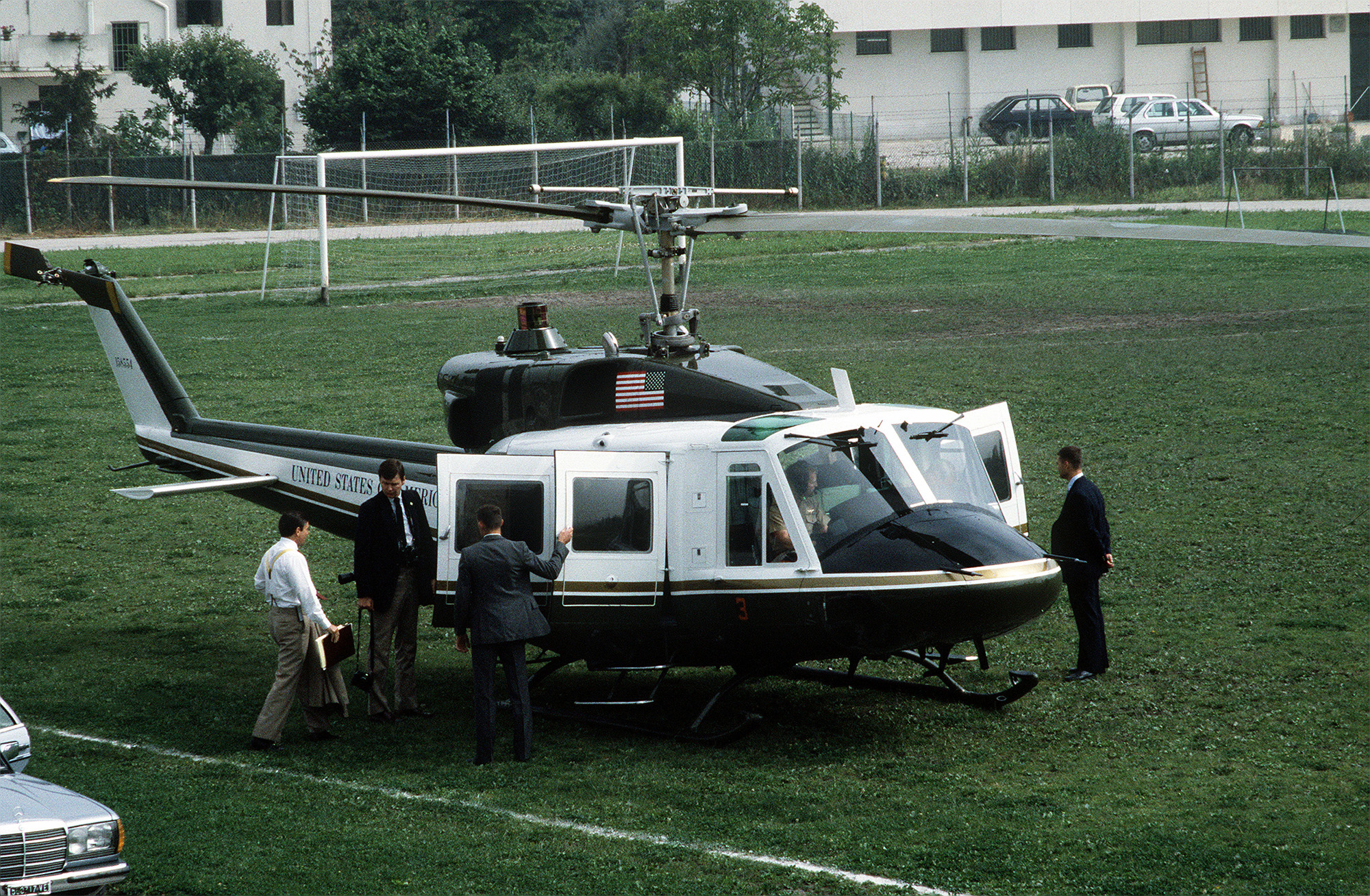
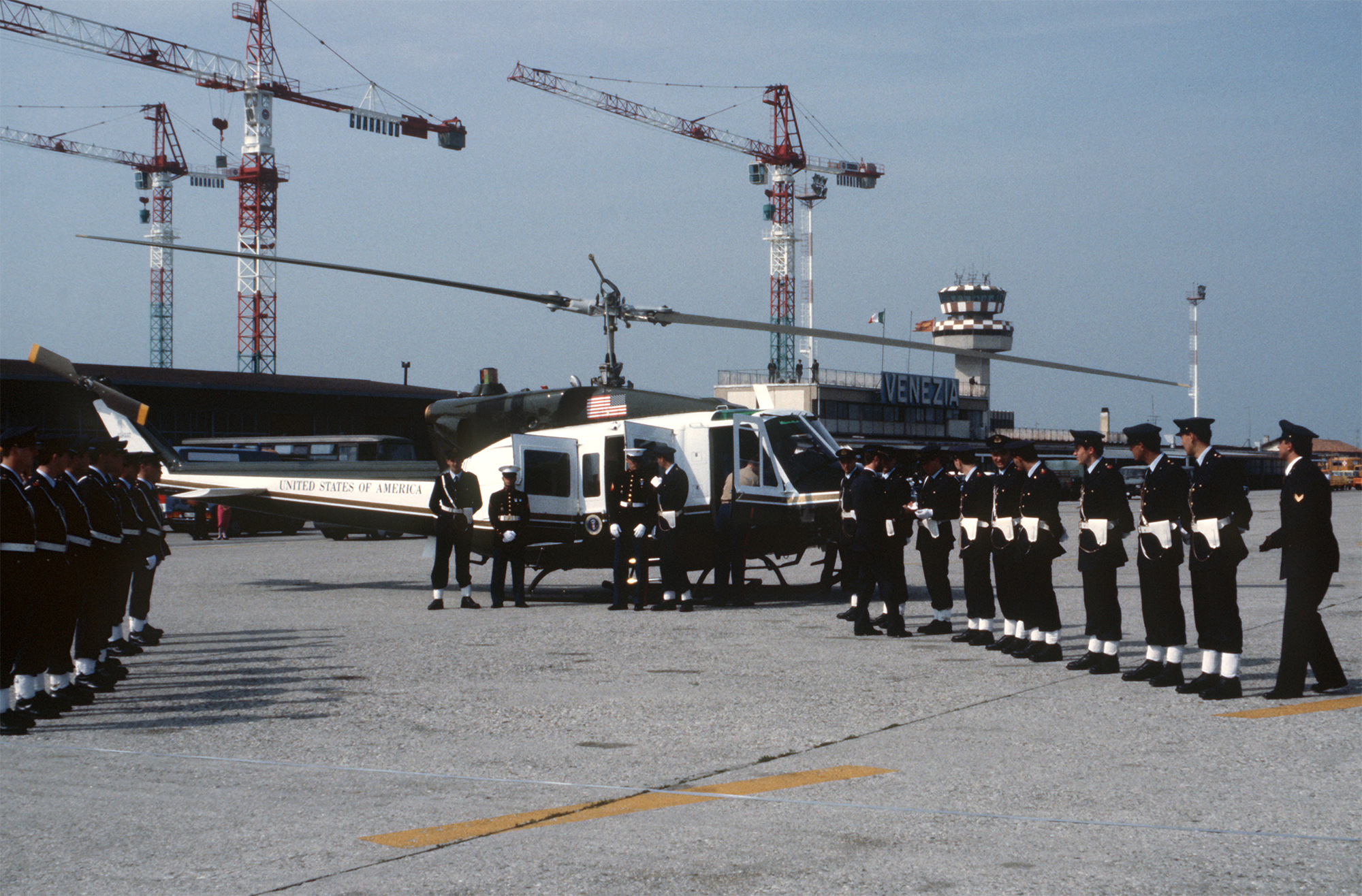
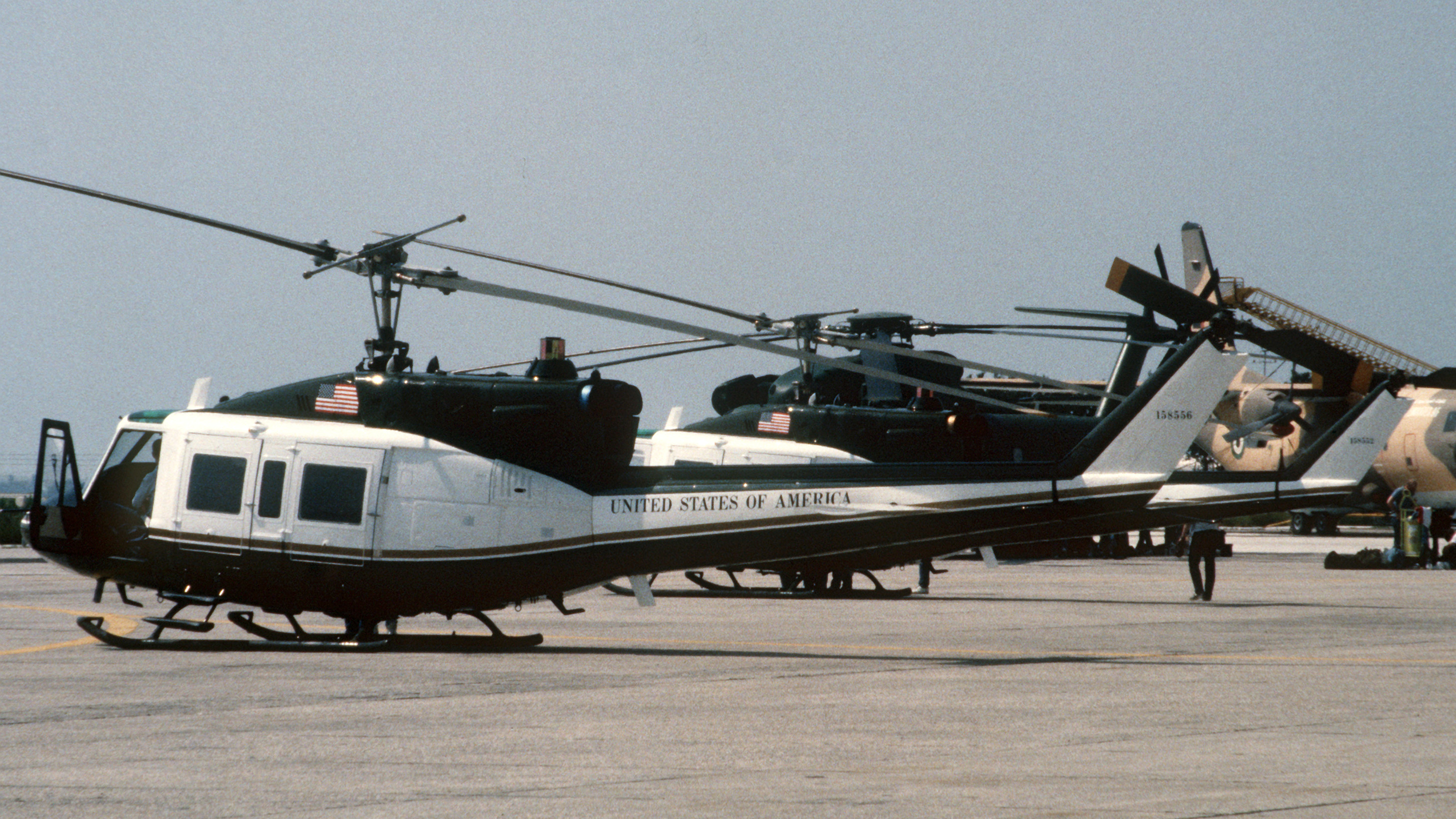
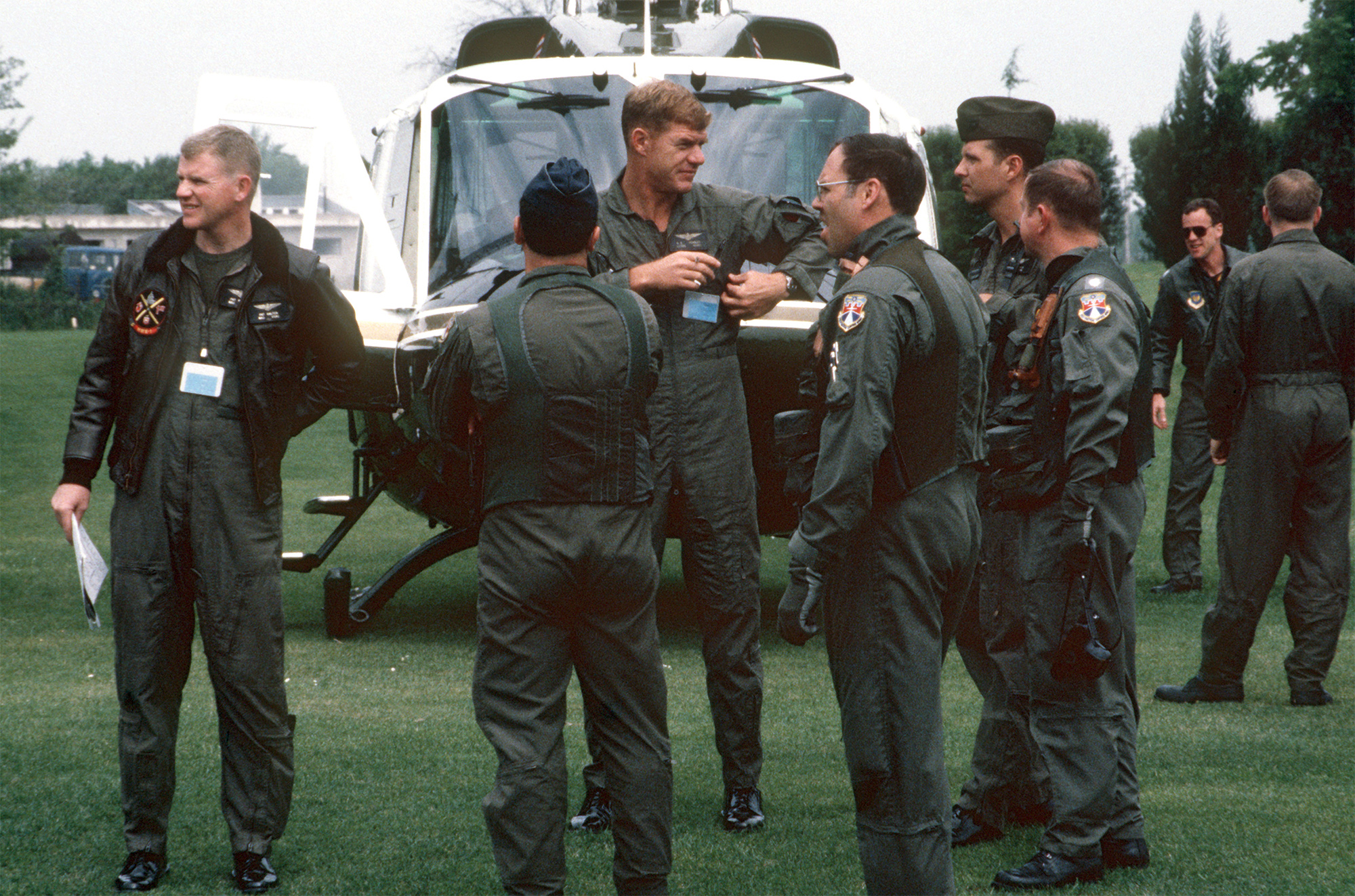
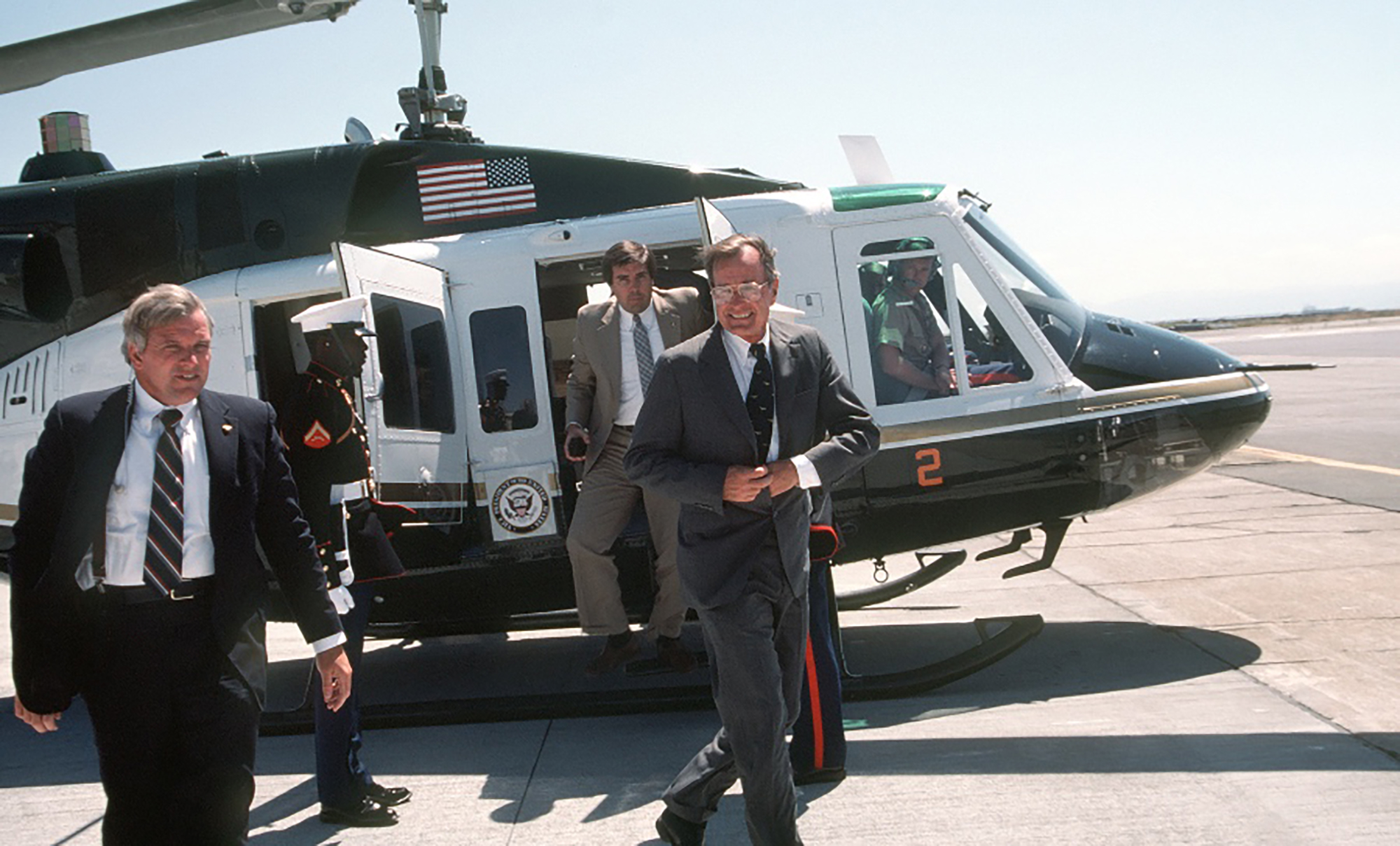
Just as the Presidential VC-25As operate under the callsign ‘Air Force One’ while transporting the President, individual ‘white top’ US Marine Corps helicopters are known as ‘Marine One’ whenever POTUS is aboard. The Hueys typically operated as Marine One aircraft either on short-notice trips inside the continental United States, for example, if the President needed to tour an area ravaged by a tornado or other natural disaster, or during overseas trips, as the Hueys were much easier to move via cargo aircraft like the Lockheed C-5 Galaxy without having to deeply reconfigure the aircraft for transport.
The Marine Corps’ acquisition of the vastly more capable Sikorsky VH-60N ‘White Hawk’ in 1988 signaled the end of the VH-1N’s service as a Presidential transport. The final overseas mission for the Presidential Hueys occurred in July 1989, when President George H.W. Bush visited the Netherlands, relying on VH-1N 158554 for local transport.
Following the end of the Hueys’ VIP mission, Bell Helicopter modified all six aircraft to HH-1N standard, stripping them of all the bells and whistles, restoring the bench seating and rearward-sliding cabin doors, and adding a rescue winch for hoist work. All six aircraft were subsequently assigned to bases on the west coast, providing SAR coverage for aircraft flying out of Naval Air Warfare Center China Lake, Naval Air Stations Fallon and Lemoore, and Marine Corps Air Station Yuma.
Of the six, two were written off in crashes. Another was damaged in a hard landing but appears to have returned to flight to finish its career with HMLAT-303 ‘Atlas,’ a training squadron, at MCAS Camp Pendleton. Another retired from rescue duties with NAS Fallon’s ‘Longhorn’ SAR unit before being acquired by the Battleship Memorial Park museum in Mobile, Alabama, faithfully restored as a VH-1N in HMX-1 markings. The last two former VH-1Ns – 158554 and 158557 – remain on the active roster, assigned to Headquarters & Headquarters Squadron MCAS Yuma’s SAR unit.
The missions the Marines and sailors of Yuma SAR perform range from responding to military aircraft mishaps and special operations free-fall parachute injuries, to finding lost hikers in the ‘dual-use’ areas of the ranges surrounding Yuma, to providing first aid to law enforcement officers and federal agents along the US-Mexico border, to rescuing injured boaters along the Colorado River, to providing air support for Yuma’s Military Working Dog training program. Some of the more bizarre call-outs include serving as an aerial ‘pathfinder’ for Boy Scouts lost in the maze-like marshes along the Colorado River, leading them back to the river itself. Another involved searching for two men who called authorities saying they were kidnapped and driven out to the middle of the desert, only to find them completely blitzed out of their minds on drugs in the middle of the desert not far from the car they had wrecked, miles from anything remotely resembling a road.
The juxtaposition of all these missions with the Presidential pedigree of two of Yuma SAR’s four HH-1Ns intrigues and amuses me. Did President Reagan ever board one of his VH-1Ns thinking “Someday a drunk boater with a broken leg or a pair of drugged-out jacknobs are going to be taken to the hospital in this thing?”
Of course he didn’t.
Conversely, did any of the wounded or lost people rescued by Yuma SAR’s corpsmen ever know the flight that saved their lives was aboard one of President Reagan’s former helicopters? Probably not. But I love thinking about the storied lives of these aircraft and how, despite never seeing combat, they have a hell of a lot of interesting stories to tell.
Yuma SAR and their HH-1Ns have officially been ordered to shut-down next month. The Yuma Airshow will be their final flight with the HH-1N.
Joe Copalman lives in Mesa, Arizona with his wife, daughter, and son. A lifelong aviation enthusiast, he has been writing about military aviation since 2013 for publications including Air Forces Monthly and Combat Aircraft Journal. He is currently writing his first book detailing modern Marine Corps airpower. Joe is also the co-founder of Arizona Aviation Photographers and a Photography Instructor with 3G Aviation Media and Photography Workshops.
Contact the editor: Tyler@thedrive.com
